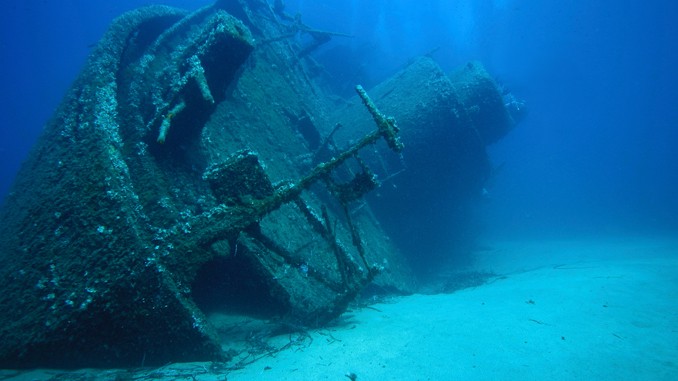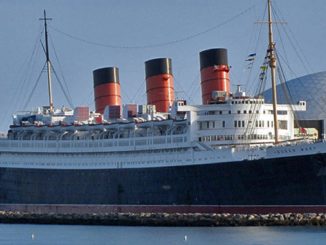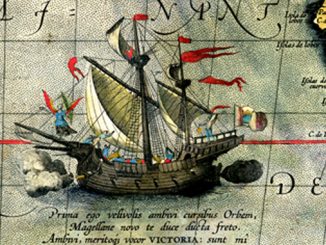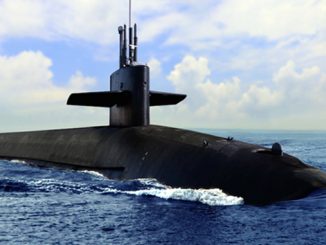
From the first ‘Krakow’
to the ‘Jan Heweliusz’
.
The tragedy that took place off the German isle of Ruegen in mid-January 1993 set a new and sad record for the number of casualties related to the loss of a merchant ship under Polish colours: the rail & car ferry ‘Jan Heweliusz’ took with her to the bottom of the Baltic sea as many as 55 people, including all of her 35 passengers.
The merchant marine of Poland lost its first*) ship already in February 1922. It was the small steamer ‘Krakow’, sailing under the flag of the long-forgotten enterprise ‘Sarmacja’ based at the landlocked city of Cracow in southern Poland. The wood-sheathed steamer was crushed by Baltic ice, fortunately without casualties.
Probably the first casualties under our colours were recorded in October 1926, when the small Polish steamer ‘Wisla’, flying the flag of the above-mentioned shipping enterprise, was thrown by a hurricane onto the shoals off the Dutch island of Terschelling. Two members of her crew, the second mate and an able seaman, were washed overboard in quick succession.
The hardest hit of the interbellum era came with the sinking of the seagoing tug ‘Gornik’ on All Saints’ Day of the year 1927. The vessel under the flag of the Wisla-Baltyk Shipping Enterprise of Tczew, fell victim to a very strong gale, taking with her to the bottom all but one members of her last crew of ten sailors, including her last skipper, one Johann Pehrs of Hamburg, Germany.
The largest unit lost in an accident before the WW2 was the steamer ‘Niemen’, a modern, 5000-ton, British-built bulk carrier, already famous for her recent first crossing of the equator for her Polish owners, during a voyage with cargo to Brazil. The death came in early October 1932, when the ship was rammed by the Finnish four-masted barque ‘Lawhill’ in the Baltic Sea. The steamer sank almost instantly but without casualties. There was one casualty aboard the Finnish ship instead, as one of her foremast yards, falling down, killed the second mate of the Erikson’s barque.
During the WW2 several Polish merchant vessels were lost due to either hostilities or accidents. The most appalling were two of these losses – one in mid-January 1942 and the other in February 1943 – at least one of them a genuine accident without any enemy participation. The former involved the bulk carrier ‘Wigry’, lost in a gale off Iceland with the skipper and all but two crew members.
The latter is a mysterious case of the bulk carrier ‘Zagloba’, known before the war as the big ‘Robur VIII’ of the ‘Polskarob’ Enterprise, which disappeared without trace, also off Iceland, with her skipper, captain Zbigniew Deyczakowski, the elder of the two brothers, and the entire crew of twenty-five. This case still remains unsolved, as well as the only one involving a missing Polish merchant ship.
The late Mr. J. Micinski, the longstanding editor of the famous Polish maritime monthly “Morze” , and one of the four ‘chroniclers’ of the Polish Merchant Marine, who passed away in January 1995, had probably thrown some light on this otherwise dark case in his posthumously published opus magnum, ‘The Book of Polish Merchant Ships.’ According to his findings, the steamer might have been torpedoed on February 6th, 1943, in the Atlantic Ocean by the German U-boat U-262.
The largest ship (by gross tonnage), lost by the Polish Merchant Marine in the course of WW2, was its first modern transatlantic liner, the Italian-built m/v ‘Pilsudski’ (14.294 tons gross, the ill-fated ‘elder sister’ of the famous ‘Batory’), that sank in late November 1939 either after hitting a mine, or having been torpedoed by a U-boat off the British coast. The end came at the very beginning of her maiden voyage after conversion into a troopship. The last (and first) skipper of the former liner, Master Mariner Mamert Stankiewicz (1889-1939), perished with his ship. He is the only officer of the Polish MM to be (albeit posthumously) decorated with the Virtuti Militari Cross, the highest Polish military decoration for bravery. With the ship went down her fourth engineer, as well as a number of freshly embarked cadets from a maritime college. Not being familiar with the ship’s layout, they got trapped somewhere inside the hull.
After the war, the Polish Merchant Marine lost their first ship already in November 1945. The steamer ‘Kroman’, a well-known veteran of the battle of Atlantic, hit a mine off the Seine estuary and sank without casualties.
The first Polish merchant vessel to be lost in a post-war collision was the steamer ‘Kielce’, a victim of a collision with the British s/s ‘Lombardy’ in March 1946, in the English Channel. The last (so far) Polish total loss through a collision was the m/v ‘Skoczow’, rammed and instantly sunk by the Gabonese ‘L’Abango’ in July 1990 in the Atlantic. In both cases, there were luckily no casualties among the crew members.
The first Polish post-war personnel casualties were incurred in July 1949, when – exactly on her patron saint’s day – the coastal passenger ship ‘Anna’ was rammed by the Turkish freighter ‘Odemis’ and sank in the Gulf of Gdańsk. Eleven people perished; the ship was then raised, repaired and again put into service under a new name of ‘Zofia’.
By the way, the “Anna” was quite a history-making ship: one of the two first coastal passengers ever, both custom-built to Polish specifications and named after the daughters of Marshal Pilsudski (who, however, did not turn out to be such a lucky protonym for Polish vessels himself).
The motor logger-trawler ‘Czubatka’ of the famous (and unique) yard type B-11, whose units were named after local birds, sank with her entire crew in a strong gale in the North Sea in May 1955. Most probably this ship is the first Polish-built seagoing vessel lost due to an accident, and certainly the sad casualty record holder in the Polish fishing fleet. After the ‘Czubatka’ and between the years 1956-69, four more units of this class were lost: the ‘Cyranka’, the ‘Mazurek’, the ‘Gluszec,’ and the ‘Gawron’ (the last one, strangely enough, in a harbour!)
The first Polish steam trawler of the so-called B-14 ‘River-class’, lost on the high seas in 1964, was the s/t ‘Wislok’. The vessel ran aground and then sank with one casualty among the crew. Then, between 1971-75, three more ships followed, due to various reasons: the s/t ‘Kamienna’ (in collision with a Soviet ship on Georges Bank in June 1971), the s/t ‘Nurzec’(stranded in January 1974 off the Scottish Aberdeen with three casualties among her crew and one more from the crew of a Soviet seagoing rescue vessel) and the s/t ‘Brda’ (which ended up on a wave-breaker of the Danish Hanstholm early in January 1975 with as many as eleven casualties among her crew).
The only modern Polish factory trawler ever lost due to an accident was the m/t ‘Tarpon’. She ran aground on a sandbank off Dakar in effect of an error made by one of her watch officers. Despite many efforts, the ship had never been salvaged and remained on the spot, being slowly destroyed by the sea.
The first Polish post-war freighter ever to be lost due to cargo shifting was the ‘Stalowa Wola’ which sank in March 1956 in the famous Bay of Biscay (with no casualties). Later, she was followed by several ships under Polish colours, for example, the small ‘Nysa’ (PZM) in January 1965 – sadly with her captain and the entire crew of 18 people; this small freighter – the first one constructed especially for her owners – also holds the tragic casualty record of their entire fleet. The second ‘Wroclaw’ (a motor bulk carrier from the same fleet) sank in the same way in the Mediterranean Sea in April 1973, her entire crew having been gallantly saved by the French destroyer ‘Guepratte’. The Polish Ocean Lines lost in this way – after a spontaneous cargo shifting in bad weather – two units from their Romanian-built ‘Zdroj'(‘Resort’)-general cargo ships: the ‘Kudowa Zdroj’ in January 1983, also in the Mediterranean Sea, and the ‘Busko Zdroj’ in the North Sea in February 1985. Both ships took with them their captains and almost entire crews. The latter holds the sad casualty record of her owner’s fleet.
The first ever tragic blaze on a Polish merchant ship happened in the Gdansk Shipyard in mid-January 1961. The fire almost completely consumed our big, 10,000-ton general cargo motor vessel ‘Maria Konopnicka’. She was the 24th unit of the famous Polish series, know as the B-54 type, and was then in the process of outfitting for her maiden voyage. The blaze turned into veritable hell, killing 22 yard workers and crew members. Later on, more fires consumed other Polish ships, such as the small m/v ‘Drawa’, a PZM freighter based in Szczecin, which succumbed to fire off Dutch coast in March 1964. Another unit gutted by fire beyond repair was the PLO motor vessel ‘Jozef Conrad’, which fell victim to a US air attack on the harbour of Haiphong, North Vietnam, in December 1972, with the loss of four lives. Still another victim of a fire was the m/v ‘Reymont’ (B-54 type, similar to the ‘Konopnicka’ mentioned above) in mid-April 1979. The ship lost her entire superstructure, and two members of her crew died. The third victim of the fire was her last skipper who committed suicide after having been found responsible for the ship’s loss by the Maritime Court. The PLO general cargo motor vessel ‘Traugutt’ (yard type B-41) caught fire several months later off Karachi, Pakistan; her last skipper died of heart disease shortly after his ship. Towards the end of the ‘fiery’ year 1979, yet another fire ruined the motor factory trawler ‘Luzytanka’ based in Szczecin. Late in 1987, a fire damaged extensively the ‘rusty bucket’ of our fishing fleet, the big factory ship ‘Pomorze’ (yard type B-67). The blaze resulted in four mortal casualties among the crew. Troubled by fires were also our Norwegian-built, small and obsolete rail-and-car ferries, the ‘Mikolaj Kopernik’ and the ‘Jan Heweliusz’. In the second case, it has been rumoured that the fire was the ship’s protonym’s – the famous astronomer of the 17th century – revenge for having his mortal remains disturbed by archaeologists in the port city of Gdansk.
The ‘Jan Heweliusz’ set the general Polish maritime casualty record when she capsized and foundered in the Baltic Sea in mid-January 1993. The ferry was the first Polish vessel of her type to become a total loss. A bit younger than her elder sister, the ‘Mikolaj Kopernik’, the ‘Jan Heweliusz’ is believed to have been ‘cursed’ by God Himself with a number of accidents, many of them serious, like the famous near-capsizing at the quay in Ystad, Sweden in 1982. This accident was quite similar to that of the old s/s ‘Tczew’, which capsized in the port of Danzig/Gdansk in December 1938. The former record holder of this kind was the s/s ‘Zagloba’ mentioned above. The case of the cursed ‘Jan Heweliusz’ is, in a way, even worse than that of the ill-fated ‘Titanic’: she took all of her 35 passengers to the bottom, while about 40% of passengers of the ‘Titanic’ were saved!
The largest Polish freighter (by tonnage) lost after the war is still the once well-known motor vessel ‘Dzierzynski’, a passenger&cargo ship of more than 13.000 tons gross (only slightly less than the tonnage of the ‘Batory’). This motor vessel had been raised from the seabed by Polish salvage specialists in the 1960s, after having been sunk by retreating German forces at the end of WW2 to prevent bigger units from entering Polish harbours of the Tri-City. The big ship had been originally built for British owners by what was then called the ‘Danziger Werft’ in the Free City of Danzig. Refloated and repaired, the vessel was then given to the already mentioned ‘Chipolbrok’-Shipping Enterprise to fly Polish colours and their flag. According to rumours, at least one member of her crew had been murdered aboard the ship! Finally, in September 1963, after a number of accidents on the Schelde, the hull of the ship broke in two and the vessel became a total loss. Sixteen years later, on the same Schelde River, another Polish ship – this time the so-called ‘Great Lakes’ freighter’ m/v ‘Zamosc’ (yard type B-446) – also sank, rammed by a big Japanese car-carrier. There were no casualties.
Plagued by disasters were as well the units of our technical (or auxiliary) fleet. Between 1945 and 1989, at least two Polish tugs were lost at sea, one of which – the ‘Atlas’ – fell victim to a gale in the Baltic in September 1949, taking with her almost the entire crew. Another tug, the ‘Goliat’, was rammed in 1982 by a freighter on what the Germans call the ‘Oderhaff’ – the fairway between Swinoujscie and Szczecin – and sank without casualties. Later on, she was refloated and put back into service. One of the two lost Polish dredgers – the ill-omened ‘Stulbia’(Hydra) – sank off the Ustka harbour entrance in late January 2000. Her hull, severely damaged in the collision with a wave-breaker, had served for some time as a local attraction for ‘landlubbers’ coming from the Polish interior to vacation at the seashore. Another dredger, the ‘Rozgwiazda’ (Starfish), while towed by too weak a tug, fell victim to a Baltic storm in October 2008, taking with her the entire group of five ‘runners’ aboard.
The only case known to the author of this story of a Polish fishing cutter disappearing without trace in the Baltic Sea was that of the ‘Hel-126’, missing since February 1979.
.
Wojciech Wachniewski
.
*) Some historians credit with the title of the first Polish vessel lost due to an accident the famous ‘Polonja’, the first seagoing unit to fly the colours of the resurrected Poland (then loosely patterned after the Russian flag with St. Andrew’s Cross) that fell victim to a fire in the Black Sea in 1918.
P.S. The above account is far from complete but it still gives an idea of the ‘dark side’ of shipping under Polish colours which is nevertheless considered one of the safest in the world.



